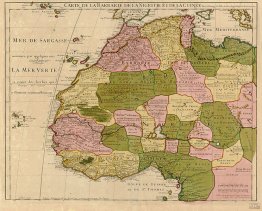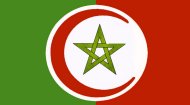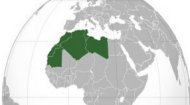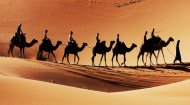|
Maghreb Region | Maghreb Region | Maghreb Region | Maghreb Region |

|
Morocco operates as a constitutional monarchy, while Algeria and Tunisia are republics. Libya remains in a transitional and often volatile state following the 2011 uprising, struggling with internal divisions. Mauritania, a vast desert nation, navigates its unique position bridging the Arab Maghreb and Sub-Saharan Africa. Relations between these nations are not always harmonious, often complicated by historical grievances, economic competition, and geopolitical rivalries, most notably the unresolved Western Sahara dispute which significantly strains ties between Morocco and Algeria. Efforts to foster regional integration, such as the Arab Maghreb Union (AMU) formed in 1989, have largely remained dormant, hindering cross-border trade and cooperation.
Across the board, these nations face common economic hurdles, including high youth unemployment, the need for diversification away from natural resources, and the imperative to attract foreign direct investment. Global economic shifts and the rise of digital technologies are pushing governments to invest in infrastructure, education, and innovation to create more resilient economies. Compounding these economic challenges are severe environmental pressures. The Maghreb is one of the world's most vulnerable regions to climate change. Water scarcity, desertification, and an increase in extreme weather events pose significant threats to agriculture, livelihoods, and urban centers. In response, Maghreb countries are increasingly investing in renewable energy, particularly solar and wind power, positioning themselves as potential leaders in green energy production, not just for domestic consumption but also for export to Europe. The Maghreb is characterized by a young and rapidly urbanizing population. This demographic dividend presents both an opportunity for economic growth and a challenge to create sufficient jobs and social services. Education systems are striving to equip millions of young people with the skills needed for a competitive global economy, while also balancing traditional values with modern curricula. Social media and digital connectivity have transformed communication and public discourse, enabling new forms of activism and cultural exchange. Culturally, the Maghreb is a vibrant blend of ancient traditions and contemporary expressions. Ancient souks and medinas thrive alongside modern shopping malls. Music genres like Algerian Raï, Moroccan Gnawa, and traditional Malhun continue to evolve, blending with global influences. Literature from the region, often exploring themes of identity, migration, and post-colonial experiences, has gained international recognition. Efforts to preserve Amazigh languages and cultures are also gaining momentum, reflecting a broader appreciation for the region's diverse heritage. The modern-day Maghreb stands at a critical juncture. It is a region grappling with complex internal and external pressures, from global economic volatility and geopolitical shifts to the profound impacts of climate change and the aspirations of its youthful populations. Despite these challenges, the Maghreb possesses immense potential. Its strategic location, rich human capital, and abundant natural resources offer a foundation for future prosperity. Forging stronger regional cooperation, investing in sustainable development, fostering inclusive governance, and empowering its dynamic youth will be key to unlocking this potential. The Maghreb of today is not just a collection of nations; it is a shared journey of people striving to carve out a prosperous and stable future while honouring a deep and enduring historical legacy. |
 By 67CE Rome ruled the entire Maghreb from Egypt to the Atlantic, however its fall in 455CE, saw the Vandals, who had sacked Rome, move into north Africa and seized control of the Maghreb from Libya to Morocco, establishing a Kingdom of the Vandals across Algeria and Libya by 500CE. Justinian the Great, Byzantine Emperor (527 to 565CE), reconquered the territory during the Vandalic War of 533–534CE and the Byzantines ruled the Maghreb until the Arab invasions of the 7th century when it came under Islamic influence and stewardship.
By 67CE Rome ruled the entire Maghreb from Egypt to the Atlantic, however its fall in 455CE, saw the Vandals, who had sacked Rome, move into north Africa and seized control of the Maghreb from Libya to Morocco, establishing a Kingdom of the Vandals across Algeria and Libya by 500CE. Justinian the Great, Byzantine Emperor (527 to 565CE), reconquered the territory during the Vandalic War of 533–534CE and the Byzantines ruled the Maghreb until the Arab invasions of the 7th century when it came under Islamic influence and stewardship.




 Economically, the Maghreb presents a mixed picture of resource wealth and developmental challenges. Algeria and Libya are significant oil and gas producers, with their economies heavily reliant on hydrocarbon exports. Morocco, on the other hand, is rich in phosphates and has invested heavily in tourism, renewable energy, and automotive manufacturing. Tunisia, while smaller and less resource-rich, has historically been a leader in economic diversification, focusing on tourism, textiles, and light manufacturing. Mauritania's economy relies on iron ore, fisheries, and nascent oil and gas exploration.
Economically, the Maghreb presents a mixed picture of resource wealth and developmental challenges. Algeria and Libya are significant oil and gas producers, with their economies heavily reliant on hydrocarbon exports. Morocco, on the other hand, is rich in phosphates and has invested heavily in tourism, renewable energy, and automotive manufacturing. Tunisia, while smaller and less resource-rich, has historically been a leader in economic diversification, focusing on tourism, textiles, and light manufacturing. Mauritania's economy relies on iron ore, fisheries, and nascent oil and gas exploration.


